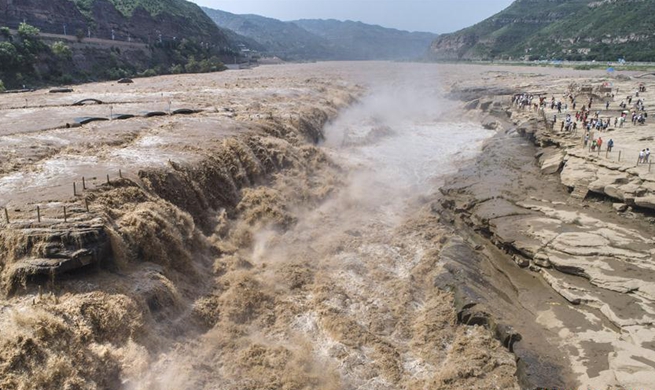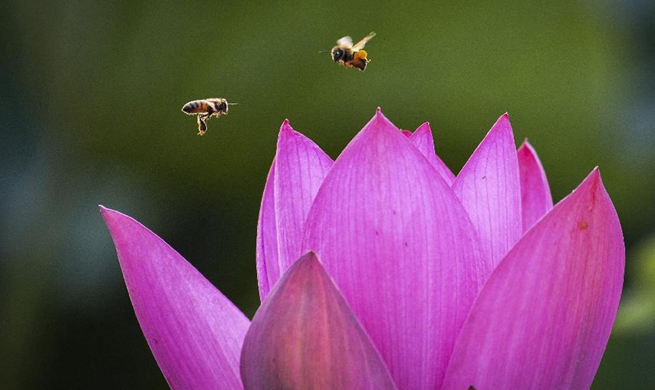NAIROBI, July 19 (Xinhua) -- The Kenya Wildlife Service (KWS) on Thursday displayed 18 horns of nine black rhinos who died last week after a failed relocation from Nairobi and Nakuru National Parks to Tsavo East Sanctuary.
Najib Balala, the cabinet secretary for tourism and wildlife, had earlier authorized the parading of the horns implanted with micro-chips as a gesture of transparency amid concerns over the sudden death of the iconic mammals.
"There is a protocol of transporting ivory from one station to another and I have directed Kenya Wildlife Service to display them for verification by the media and members of the public," said Balala.
"Fortunately, all the horns have electronic chips and transmitters and it is possible to verify whether they belong to the rhinos that died," he added.
The death of nine black rhinos at a sanctuary in the expansive Tsavo East National Park caused consternation in the local and global wildlife conservation fraternity.
So far, only two out of the 11 rhinos that were translocated to the wildlife sanctuary have survived while a multi-agency team has been formed to establish the cause of their sudden demise.
Scientists from KWS had earlier intimated that the rhinos died as a result of severe dehydration after they consumed borehole water that was too saline.
Balala ordered a halt on translocation of rhinos that was being undertaken by KWS in partnership with World Wide Fund for Nature (WWF) until the cause of the deaths was resolved.
Linus Kariuki, coordinator of rhino program at the KWS, said the use of micro-chips to monitor the movement of giant land mammals like rhinos has boosted their protection amid threat of poaching.
"By implanting a micro-chip on the rhino horns, it is possible to track their movement and obtain critical details like gender and age," Kariuki said.
Kenya's rhino population that is currently estimated at 1,200 is facing threats linked to poaching, shrinking habitat and climatic shocks.













